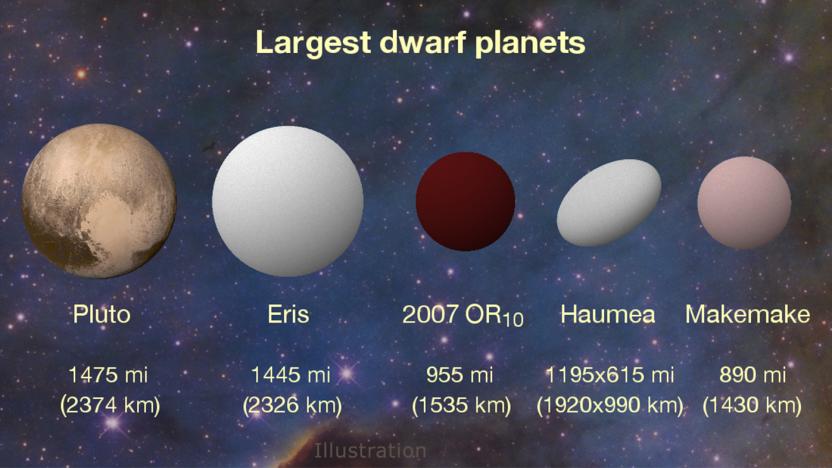Herschel
Latest

NASA upgrades 'Snow White' to our system's third-largest dwarf planet
Meet 2007 OR10: "the largest unnamed world in our solar system," according to NASA. At 955 miles in diameter, the dwarf planet is about two-thirds the size of Pluto, and is believed to have both water ice and methane on its surface.

Scientists prove dwarf planet Ceres contains water
Scientists have long thought that the dwarf planet Ceres might hold some form of water, but they've only had indirect evidence at best -- until today, that is. An ESA-led team has used signal fluctiations to confirm that the asteroid belt planetoid is spewing water vapor from two points on its surface, creating both ice and a rudimentary atmosphere. It isn't clear what's producing the vapor, although researchers believe that geysers, thawing or icy volcanoes may be responsible. Whatever is behind Ceres' behavior, the discovery could improve our understanding of how water reached Earth. We'll get a much clearer picture of what's happening in early 2015, when NASA's Dawn probe swings by to map the mini-planet's water activity in greater detail. [Image credit: ESA/ATG medialab/Küppers et al.]

Herschel telescope finds first evidence of oxygen molecules in space
It's not every day that scientists get to say they've found something in space for the first time ever, but astronomers working with the European Space Agency's Herschel Space Observatory announced just such a discovery today, and it's a big one. They've made the first confirmed finding of oxygen molecules in space (found hiding in the Orion nebula), and suggest that the oxygen is likely released when the water ice surrounding dust grains is melted by the heat from nearby stars forming. Of course, one discovery only leads to more questions, and the scientists note that they still haven't found large amounts of oxygen, and "still don't understand what is so special about the spots where we find it."

